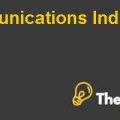
SpeedSim: Made to Exit Case Solution
Introduction/Background
Quick turn design systems were considered to be a successful business entity, which provided the vast solutions for re programmable emulation products used by the related customers of different industries. However, the segmentation of the business comprised of semi-conductor chips, programming solutions, workshops and other areas of product verification systems where the company was a pioneer of them.
Therefore, it shows that by 1996, the company investigated some merger and acquisition activities to acquire the businesses related to the operational activity of the business. Thus it concluded that acquiring the Speed Sim would benefit to increase the size of operations as well as continuously expanding the company's reputation in the market in order to defeat the largest competitor (Synopsys).
Related Issues
So under the first round, it offered $20 million to acquire Speed Sim, which ended up with a non-serious considerations of the counter management and therefore under that case, the top management of Speed Sim seemed arrogant to the acquirer and not took serious response according to the criteria offered by Quick turn.
After one year, again the offered by proposed by Quick turn regarding the value of $52.5 million, that looked to be an overvalued price of the company according to the owner of Quick turn as well as the market analysts. But from the historical perspective, most of the software or IT companies had been acquired with high prices instead of the actual value. Thus it is identified that the offer was quite normal to the company as it was hungry top takeover the software house in order to defeat the biggest competitor of the market.
While the whole story illustrates the problems faced by both the companies regarding the difference in product expansion, research and development process as well as different nature of culture. Thus it is concluded that using the analytical tools and techniques, the researchers would be able to identify the lack of adoptable activities of Quick turn, also they would use a predetermined measure to analyze the probability of loss if the conditions would not be matched with both the companies regarding the lack of adoption of culture, the use of indifferent marketing techniques to offer the products and services as well as lack of relationships between two research and development systems.
So with all these problems, Quick turn would suffer a loss and would be subjected to sell in the future because it knew that the aim of Speed Sim was to took an opportunity to sell out when its market would be at the peak. So this activity would not be able to increase the operational size as well as new technological systems more than the expected one.
It is concluded that if this scenario would happen in the future, then the consequences would not be for Quickturn because either it would be bankrupted or suffered liquidity problems subjected to sell out. So the case shows that merger and acquisition activity sometimes plays a negative role if there are a misunderstanding and lack of adoption of different infrastructure as well as culture.
Quickturn overpays for the acquisition of SpeedSim
It has been analyzed that Quick turn overpaid to Speed Sim under the terms of merger and acquisition because the company was in a hurry to defend itself in a market because of its major competitor, Synopsys had a huge market share in hardware as well as the software industry. Therefore, in order to compete against it, Quick turn should have the operations of software development.....................
This is just a sample partial case solution. Please place the order on the website to order your own originally done case solution.









